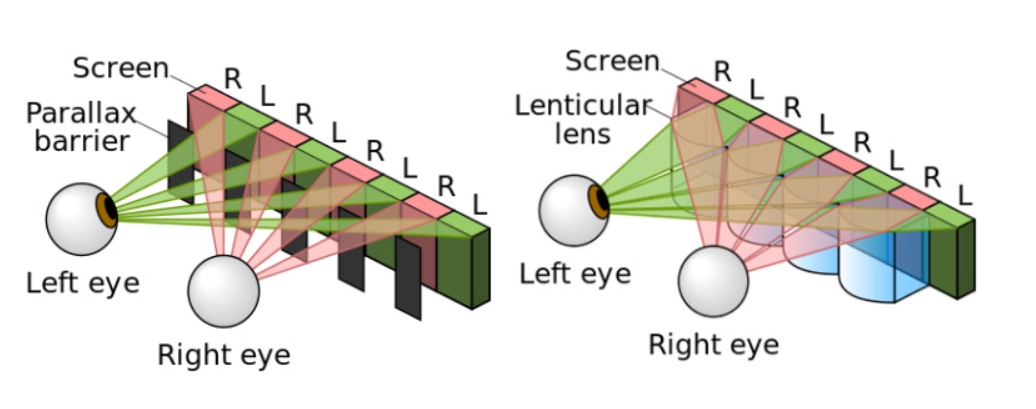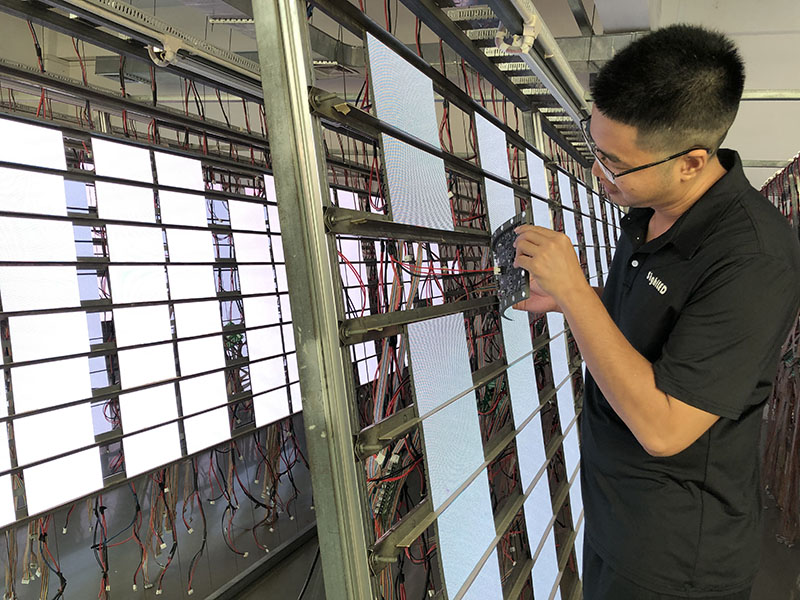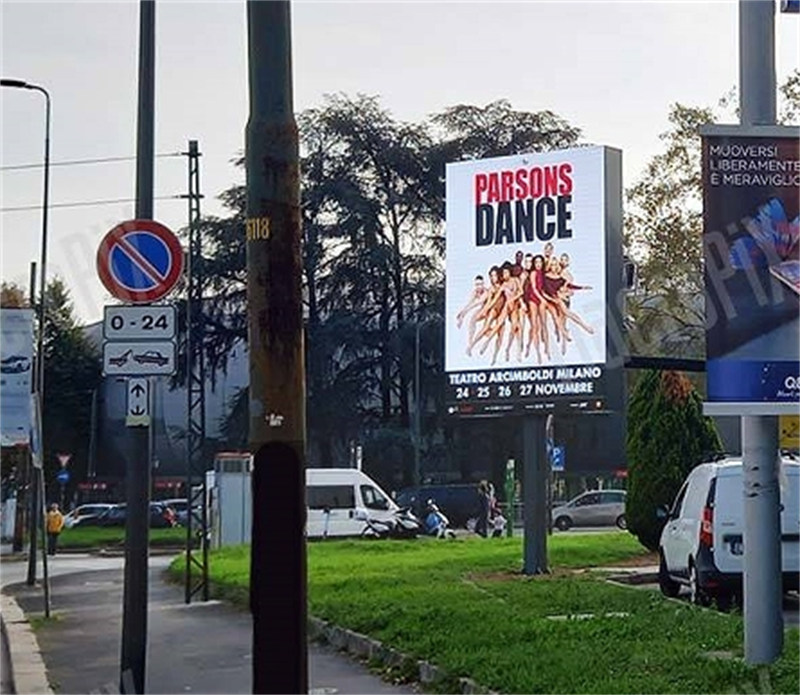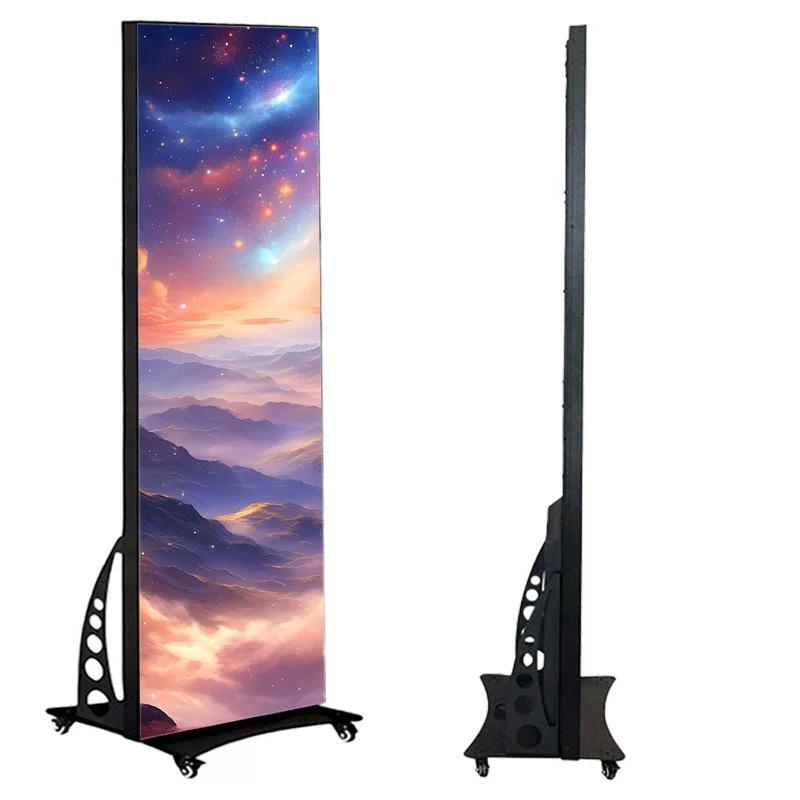Table of Contents
ToggleWhat are 3D Billboards?
3D billboards are outdoor advertising displays that utilize digital technology to create the illusion of three-dimensional images or text. Unlike traditional billboards, which typically feature flat, static images, 3D billboards use moving images or text to give the impression that the contents of the billboard are emerging from the surface.

These billboards are designed to provide a superior visual experience, captivating viewers with their immersive and dynamic nature. While some 3D billboards have structural parts made of metal or alloy, others are constructed from sturdy polymers, allowing them to create the illusion of movement both inside and outside of the physical screen.
The composition of a 3D billboard can vary depending on the design concept, with LED projection and lighting fixtures often incorporated to enhance the 3D effect and create more attention-grabbing displays. Overall, 3D billboards offer advertisers a unique and engaging way to capture the attention of their target audience and increase brand visibility.
2. How do 3D Billboards work?
The operation of 3D billboards involves a sophisticated combination of technologies aimed at creating a compelling three-dimensional visual experience. Here’s how they work:
- Parallax technology: Parallax plays a crucial role in generating the 3D effect on billboards. By incorporating multiple layers of images or elements that move at different speeds, parallax creates a sense of depth as viewers move past the display. This technique mimics how our eyes perceive depth in the real world, enhancing the realism of the 3D illusion.
- Stereoscopic imaging: Stereoscopic imaging entails presenting slightly different images to each eye, simulating humans’ natural binocular vision. In 3D billboards, this effect can be achieved using specialized lenses or auto stereoscopic displays that don’t require viewers to wear 3D glasses. The brain combines these slightly offset images, creating the perception of depth.
- Layered content: The content displayed on 3D billboards is often created in layers, with each layer representing a different aspect of the overall image. These layers can include foreground, middle-ground, and background elements. As these layers move independently or respond to viewer interaction, they contribute to the creation of a multidimensional effect, enhancing the depth and realism of the display.
- LED display technology: High-quality LED technology is essential for the success of 3D billboards. LEDs provide vibrant and dynamic visuals with the necessary brightness and color depth. LED displays can be arranged in various configurations, allowing for precise control of individual pixels and contributing to the creation of intricate and realistic 3D effects.
- Motion sensors and interactivity: Some 3D billboards incorporate motion sensors and interactive elements. These features enable the display to respond to the movements of passersby, creating a personalized and engaging experience. Interactive 3D billboards may change their content based on viewer proximity or gestures, enhancing the overall impact of the advertising message and increasing viewer engagement.
In summary, the combination of parallax technology, stereoscopic imaging, layered content, LED display technology, and interactivity allows 3D billboards to create captivating and immersive visual experiences that grab the attention of viewers and leave a lasting impression.
3. How Does the Human Eye See the 3D World?
Our perception of the three-dimensional world is a complex process that relies on various cues and mechanisms within our visual system. Here’s how the human eye sees the 3D world and how 3D billboards take advantage of this:
- Visual processing by the brain: The human brain is the ultimate processing unit for visual information. It gathers data from the external environment, including binocular cues from each eye, and processes it to create a three-dimensional worldview.
- Binocular cues: Binocular cues are visual cues that rely on the disparity between the images seen by each eye. These cues include convergence, stereopsis, and shadow stereopsis. Stereopsis, in particular, is crucial for perceiving depth. It’s the sense of depth created by the brain from the slightly different images captured by each eye.
- Horizontal disparity: Horizontal disparity, also known as binocular disparity, refers to the difference between the images received by each eye due to their distinct angles of view. Our brains use this information to calculate depth perception.
- Visual cortex: The visual cortex is the part of the brain responsible for combining the images from each eye into a single, coherent three-dimensional perception. It helps us understand the width, depth, length, and spacing between objects in our visual field.
3D billboards leverage these mechanisms of human vision to create the illusion of depth and realism without the need for special glasses or equipment. By utilizing techniques such as parallax, stereoscopic imaging, and layered content, 3D billboards present viewers with images that engage their binocular vision and trigger their perception of depth. This allows 3D billboards to deliver immersive and captivating visual experiences that leave a lasting impression on viewers.
4. Naked-eye 3D Holographic Projection ≠ Naked-eye 3D Video Effect
When you look at a 3D image without using any special glasses, it’s because of something called binocular parallax. This means that your eyes see slightly different images, and your brain combines them to make them look 3D.
Now, for showing naked-eye 3D images on a computer screen, the concept of raster is used. It helps create 3D effects on the screen you’re looking at.
Holograms (like the ones you see in science fiction movies), on the other hand, have sort of different ideas at play. The words “interference” and “infraction” are used to explain the mechanics of holograms.
Here’s the main difference: when you look at a 3D billboard, there are some rules. You need to be at a certain angle and distance to see it properly. But with 3D holograms, you can see them from any angle and distance.
Let’s break it down even more. Imagine you’re looking at a 3D billboard. It’s like seeing two pictures from two different angles, and your brain combines them into one picture that looks 3D. It’s a little trick your eyes play. Even though the billboard is just flat, your brain makes it seem like it has depth and space.
So, in simple terms, 3D billboards need you to be at a specific angle and distance, while 3D holograms don’t have these rules. They can create the illusion of depth without any special requirements. Cool, right?
5. Characteristics of 3D Digital Billboards
So far, we know that billboards display incredible images with a range of depth. Let’s examine some of the characteristics of 3D billboards to learn more about them:
- 1). High resolution
An essential premium attribute of 3D LED billboards is high resolution. Very high-resolution images and films are usually displayed on a high-performing 3D LED panel. This is because display images of a higher quality correspond to greater display depth and detail. Like this, a billboard will draw in visitors more successfully if the display characteristics are advanced.
- 2). Adaptive brightness
Manufacturers of 3D-LED billboard screens engineer them to function at their best in all weather and lighting scenarios. They automatically adjust the brightness to provide the optimal viewing experience, whether it’s bright outside or dark indoors.
- 3). Versatility
In terms of design and innovation, 3D billboards offer more flexibility and variety than conventional 2D LED outdoor display screens. By including a variety of aspects in design, such as abstract shapes and forms and realistic artifacts and sculptures, an increase in audience involvement can be seen.
- 4). Increased visibility
One of the key selling aspects of 3D billboards is their high levels of visual impact and audience engagement. A video of a lion roaring through a 3D screen makes a more significant impression than a flat 2D representation of similar content. You have the flexibility to go beyond conventional constraints and create the strongest visual impact.
- 5). Brand differentiation
In the US alone, each day, more than 5,000 digital media branding advertisements are displayed. Utilizing the adaptability and greater impact of 3D LED billboards will help you stand out from the competition in the aggressive field of digital marketing and advertising.
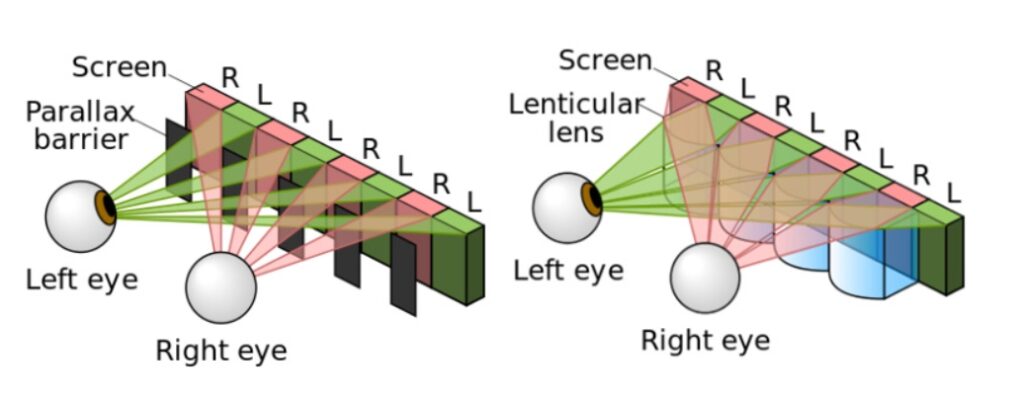
6. 3D Billboard vs Traditional Advertising Screens
Among the most used outdoor advertising formats are traditional advertising screens, however, 3D billboards are also making their way into mainstream advertising. Both are great ways of getting your message across to your audiences. However, they are not the same in terms of presentation, visual impact, or degree of interaction.
- 1). Engagement
The degree of engagement that 3D Digital Out-of-Home (DOOH) billboards offer sets them apart from conventional advertising panels. While video material on a conventional screen perfectly gets the message across, 3D billboards usually offer a higher degree of engagement.
Advertisers can produce interactive material for their 3D billboards that lets viewers interact with the advertisement in actual time. For instance, viewers may be able to interact with the instance the subject of an advertisement moves or acts a certain way.
Billboard 3D graphics are also more impactful and memorable to viewers owing to their interactive power. This is especially true for billboards that use virtual or augmented reality, as these technologies enable more immersive interactions between the advertisement and its viewers.
- 2). Differential Advertising
Conventional advertising screens are usually flat and motionless, like LCD or LED displays. They are commonly found in places like public parks, transit hubs, and shopping malls, where they show a single image or video that repeats endlessly. Traditional screens are capable of efficiently communicating a message, but they don’t have the same three-dimensional impact as a 3D billboard.
3D digital billboards, on the other hand, aim to be captivating and immersive. They offer the advertisement with a three-dimensional element that gives it a more realistic and lively appearance. An additional benefit of 3D billboards is their ability to offer viewers a distinctive visual experience.
Considering the comparison, while 3D Billboards have a slight advantage over traditional screens, they also have certain disadvantages. Because of their intricate design, they are considerably more expensive to install than conventional advertising displays and need more upkeep.
Also, not all advertising campaigns are appropriate for 3D billboards. Some messages might be better served in a more conventional style.
7. Challenges of 3D Billboards
3D billboards have the power to build a buzz for a company and leave a lasting impression on the viewer. Nevertheless, there are a few difficulties with 3D billboards, such as:
- 1). The cost of 3D billboard advertising
The cost of designing and installing 3D billboards can be high. Also, making an advertisement in 3D can be quite expensive. Most 3D billboards today are situated in posh cities, which makes it costly to buy a slot on the billboard.
Comparing this expense to brand marketing expenses, the amount adds up rapidly. The expense of using 3D billboards tends to prevent brands with small budgets from using them.
The price of a 3D billboard can range from $2000 to $8,000 for the design of the campaign to $10,000 to $50,000 for the actual billboard space. Remember that this price can vary depending on:
● Location of billboards
● Total volume of traffic in the region
● How long will the billboard (or hoarding) be available?
- 2). Technical skills
To make sure that the advertisement appears correctly from the designated viewing area, 3D DOOH involves technical knowledge and skills, including projection mapping and 3D model construction.
Additionally, each experience needs to be adjusted per the technical requirements of the different LED billboard displays.
- 3). Viewing area
The viewing area of a 3D billboard is constrained by the nature of illusions, as previously mentioned. There is an ideal viewing angle for 3D and other panoramic displays. From other perspectives, the subject will look disfigured which could reduce the advertisement’s overall impact.
8. Benefits of 3D Billboards
Ordinary billboards are not the same as 3D billboards. The latter have an impact, are engaging, and immersive. They can foster an emotional bond and deliver your marketing messages without any interruptions. Here are a few advantages of the 3D billboards:
- 1). Simpler to convey the message and establish a period of respite.
3D billboards convey messages simply because they use a combination of dimension with motion interactively. 3D billboards are more effective than 2D billboards at conveying complex or abstract topics. They can also bring an element of intrigue, as well as a respite from the routine of everyday existence.
- 2). Improved brand identification and audience retention
The goal of 3D billboards is to draw people in and leave an impression that will stay with them even after they have viewed the advertisement.
- 3). Ecologically benign and energy-efficient
3D billboards use LED technology, which consumes less energy and generates less heat than traditional billboards. Additionally, they have a longer lifespan and require less maintenance, which reduces waste and pollution.
- 4). Boost the “WOW” factor in your marketing.
Adding a WOW element to a campaign can increase its chances of becoming more viral, generating a lot of excitement among the audience.
Due to its ability to display realistic images, dynamic effects, and interactive elements that create a lasting impression, 3D billboards are highly popular on social media, with users sharing the images and videos with their followers. Thus, through social media, companies can improve brand recognition and reputation in addition to the advertisement’s visibility and reach.
For instance, Google’s 3D billboard in Times Square gained a lot of popularity on Twitter as people expressed their intrigue at the display. The realistic and futuristic design of the Balenciaga and Fortnite sneaker ads on a 3D billboard New York, London, Tokyo, and Seoul drew a lot of attention and interaction on social media as well.
9. Drawbacks of 3D Billboards
Like any other cutting-edge technology, 3D billboards have certain difficulties.
- 1). Maintenance
In general, LED screens for outdoor use are fragile, and 3D billboards are much more so. Like the parallax barrier, 3D billboards have more sensitive components.
Because of this, they require more upkeep than their flat 2D counterparts, because the physical components may need to be cleaned, repaired, or changed regularly. This may necessitate continuing funding and raise the total cost of the advertising campaign.
- 2). Universality limitations
Though they have many advanced capabilities and are quite versatile, 3D billboards may not be as useful in some scenarios. For example, the 3D effect may be less obvious and impact viewers less if the billboard is situated in a low-visibility region or is viewed from a distance.
- 3). Location Restrictions
Usually, outdoor 3D LED screens are very large. They might be visually obtrusive and take up more space, and there might not be many suitable places to install them. This geographical restriction may reduce the advertising campaign’s impact and reach while also making it more difficult for you to connect with your intended target market.

